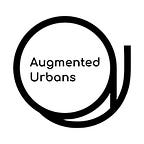Riga: Connecting a river of knowledge
The river Daugava has been the backbone of Riga ever since the first tradespeople settled here. Providing water, fishing, a transit route between East and West, and more recently even power — Riga would not be such a strategic and significant city in the history of Europe without the river Daugava. The myriad ways in which the river connects people and places have shaped this city. Indeed, Daugava is a conduit for community, migration, inspiration and so much more.
Today, looking at the tangible and intangible river connections that permeate our lives on the banks of this dark artery, yet another untapped potential to connect people has emerged. On the banks of the river some of the largest national universities — University of Latvia, Riga Technical University, Riga Stradins University, RISEBA University, all within a walking distance from one another — are developing their campuses at a similar time frame forming the Knowledge Mile.
The campuses are not going to only be among the main drivers of academic, economic and social development in Riga for the following years to come, but will also transform the housing, mobility and public service dynamics in the area. Knowledge will drive the economy. To make that happen, a strategic vision, merged skills and competencies are needed resulting in knowledge connections through Mother Daugava aiming at a resilient future and revitalisation.
Augmented Urbans initiatives provide the city of Riga with a unique perspective and tools for a resilient, more agile future by expanding the knowledge from the banks of river Daugava even farther in Riga metropolitan region. In collaboration with Riga Technical University, we have created the Augmented Urbans workspace where plans including maps, printed literature, visuals and more are gathered on one bookshelf. The workspace includes physical models which form a playground, as well as a round table for all interested parties to indulge in the participatory planning process and to showcase how the project progresses.
In November, Augmented Urbans Riga team visited the inspiring ‘Teollisuuskatu pop-up 2.0’ in Helsinki. Through presentations, discussions and demonstrations, we shared hands-on experiences about the capabilities of extended reality (XR) technology in urban development.
Colleagues from Helsinki presented in VR a 3D spatial plan for Bruno Granholm Square. The model served as a perfect example of the use of technology in making new development proposals more accessible and understandable to the public. The viewer could move freely as if standing on the square and view plans from various angles in different seasons. VR allows you to adjust the time of the day and weather conditions to experience the change in light and shadow paths. Moreover, a 3D model like this does not require the viewer to have specific knowledge. Unlike with maps and schemes, anyone can look at two different proposals, see the differences and observe changes thus allowing more people to engage, formulate an opinion and give suggestions throughout the planning process.
In turn, our Riga Technical University representatives shared their experience on technology in visual-spatial planning and architecture, and small-scale city interventions for public engagement and changing attitudes.
A chance to visit Helsinki XR Center (HXRC) sparked fresh ideas for Knowledge Mile’s tech community in Riga. The HXRC manager Tiina Vuorio introduced us to the role of the centre for the industry; to offer a co-working space, equipment, learning opportunities and mentoring for young entrepreneurs working with virtual and augmented reality technologies. HXRC aims to support the Finnish VR/AR industry and promote innovation and reduce the risks associated with hi-tech business and create a thriving community of tech minds. Anyone interested in getting started with their business idea can present their project idea, goals, team and potential and successfully pass the application process.
One of our delegates from Ogre municipality, Liene Sauka, shared insights after the visit:
“Sharing of experiences allowed us as professionals to deepen our understanding of conditions of participatory urban planning, the integration of the services provided by the city, as well as the importance of the role of the community. Quality visuals and easy to understand presentation of development plans can reduce the negative public perception of new developments”.
Having our minds stretched with all these new insights, Riga Planning Region team is now studying how resilience has been addressed in spatial plans. We are looking at resilience referenced towards a common value in our region — the river Daugava.
To create resilience by the river we have selected three focus areas that not only lie on the banks of the river, but also form a unique network of waters (estuaries of smaller streams and bayous), and a unique waterfront landscape with biologically diverse areas. With these, we want to look for ways to diversify waterfront infrastructure based on water-dependent functionalities as well as discover and display what we have already done and learned through previous initiatives. In collaboration with Riga Technical University and municipalities chosen as our focus areas, we are looking to build a platform for a common 3D GIS open data-based tool for knowledge economy-oriented actions. We have also approached Riga City Council to collaborate with us.
We want to be visible, catchy despite limited resources. We want to be digging up the ground for future projects, both virtual and smaller-scale interventions. We want to simplify social communication and engagement via ordinary tools (like GoogleEarth) and involve parties form the very places altogether. And once we create recommendations based on activities like these, we gain the power to bring attention to the wider spectrum of resilience and agility — by creating visible impact in the very places as well as reaching target audiences on different levels. That, in turn, leads to changes in multiple levels — from new grassroots actions to local building code improvements and joint proposals to the national level legal act changes.
All we are doing is between,
The river lives for Eternity
Text: Elīna Sergejeva, Riga Planning Region
Photos: Augmented Urbans Riga team
